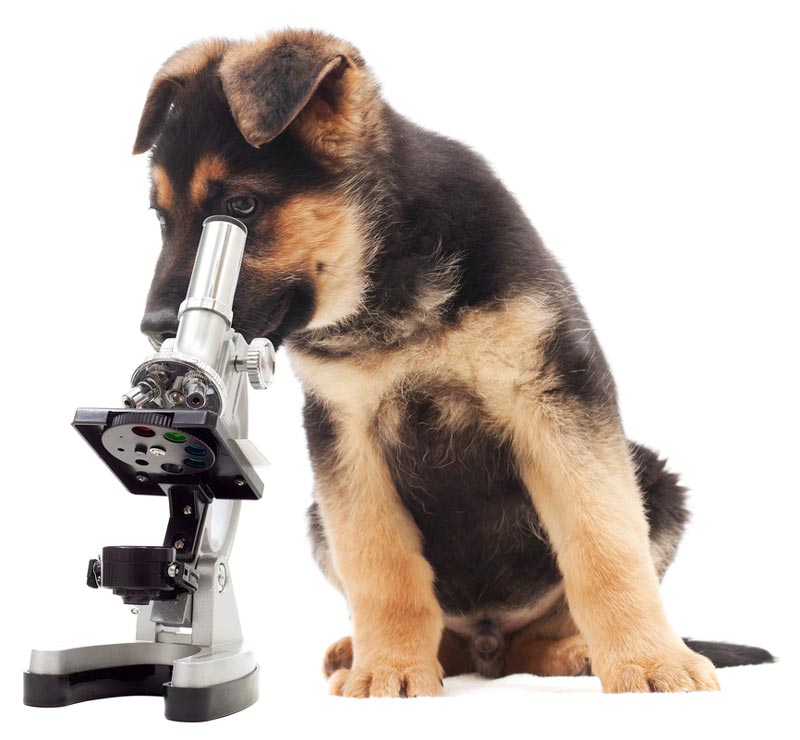Fine Needle Aspiration: What Is It and What Does It Tell Your Vet?

If your veterinarian has recommended fine needle aspiration (FNA) for your dog, it probably means that there is a lump, bump, or other abnormal area that the doctor wants to check out further. Here's what you need to know about FNA, the procedure for performing one, and what information it provides.
FNA Provides Cytology Information
Cytology is the study of cells under a microscope. FNA is a procedure that gathers cells from a specific spot on or in a dog's body in order to perform cytology. The cells are placed on a slide, and they might be stained or otherwise prepared for viewing microscopically.
A veterinarian can then examine the cells for indications of inflammation, infection, or specific illnesses like cancer. Sometimes a dog's primary veterinarian will look at the cells. Other times, the slides go to a laboratory where a veterinary pathologist who has specialized training will examine them.
When Is FNA Recommended for a Dog?
The majority of the time, veterinarians use FNA to identify cells within a lump on the outside of a dog's body. Sometimes it is used to look at joint fluid or abnormal fluid that's developed in the chest or abdomen. FNA can also be used to obtain cells from an internal organ or lymph node.
How Is FNA Performed on a Dog?
FNA is done by placing a thin, sterile needle, attached to a syringe, into the area of interest on the dog's body and pulling back on the syringe to gather cells into the needle. The needle is then removed from the site and the syringe is removed from the needle. A small amount of air is drawn into the syringe, which is then reattached to the needle and the air is used to gently push the cells present in the needle onto a microscope slide.
When FNA is used to gather cells from an internal organ, ultrasound is often used simultaneously, to guide the veterinarian in placing the needle in the right spot.
Is the Cytology from FNA Diagnostic?
Sometimes the results of the cytology done on a sample obtained by FNA are diagnostic, but more often, the results are used in conjunction with history, physical exam, and other test results to suggest a diagnosis and inform the next diagnostic step. For example, if cancer cells are seen in the cytology of a skin lump, the next step might be to anesthetize the dog, remove the lump completely, and send it to a pathologist for diagnosis.
An FNA is a quick test that can usually be done on an animal that is awake, and it can give the veterinarian good information to help decide on the necessary next steps. There are times when the cytology from an FNA is not helpful because there aren't enough cells collected or they are not helpful in the diagnosis.
You May Also Like These Articles:
Osteosarcoma: Bone Cancer in Dogs
My Dog Has a Lump: What Do I Do?
Don't Ignore This Odd Canine Behavior: Head Pressing
Disclaimer: This website is not intended to replace professional consultation, diagnosis, or treatment by a licensed veterinarian. If you require any veterinary related advice, contact your veterinarian promptly. Information at DogHealth.com is exclusively of a general reference nature. Do not disregard veterinary advice or delay treatment as a result of accessing information at this site. Just Answer is an external service not affiliated with DogHealth.com.


